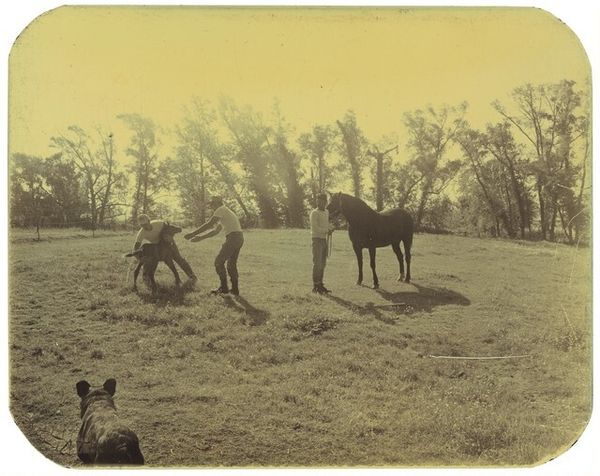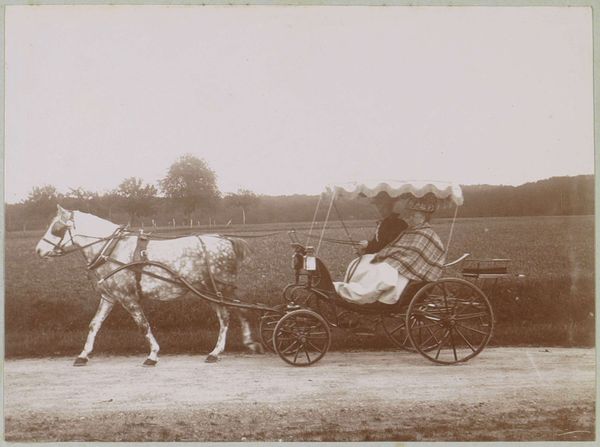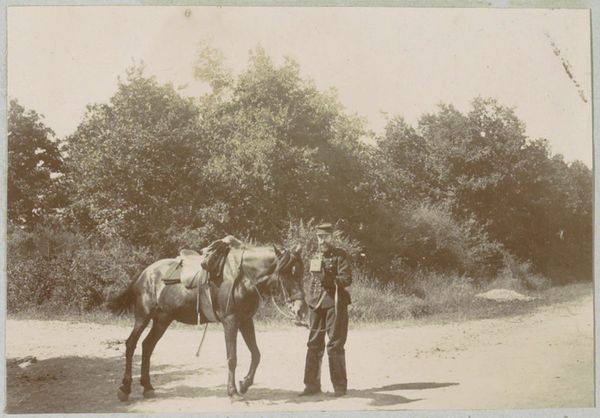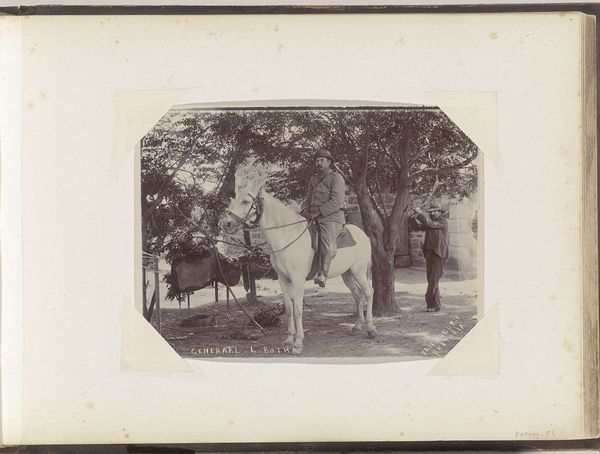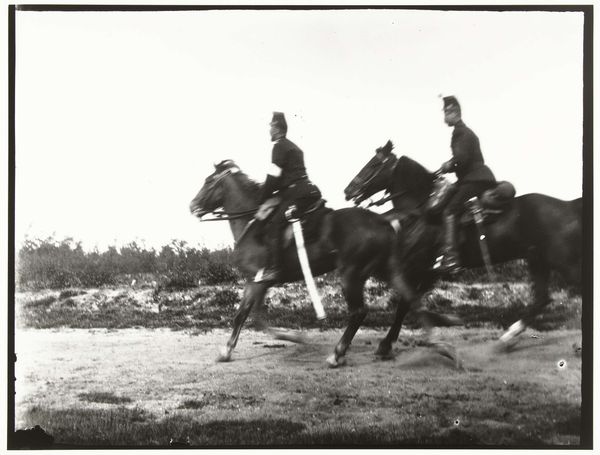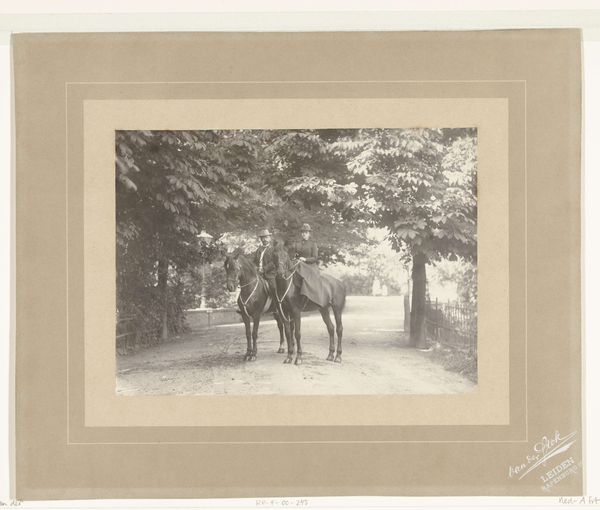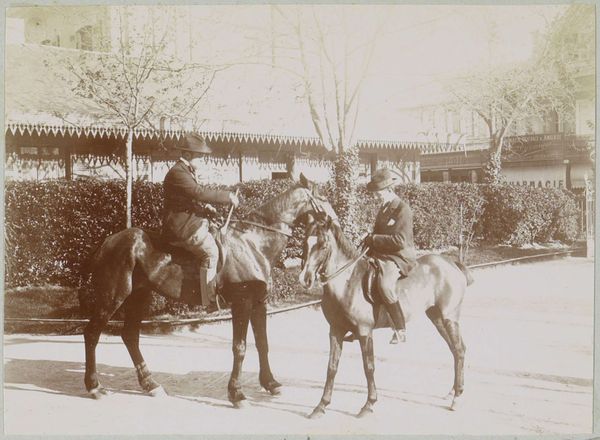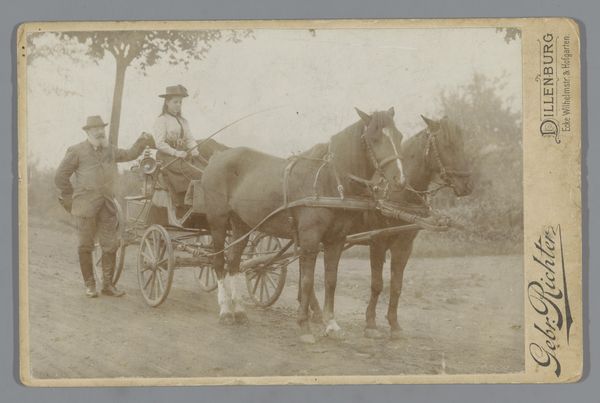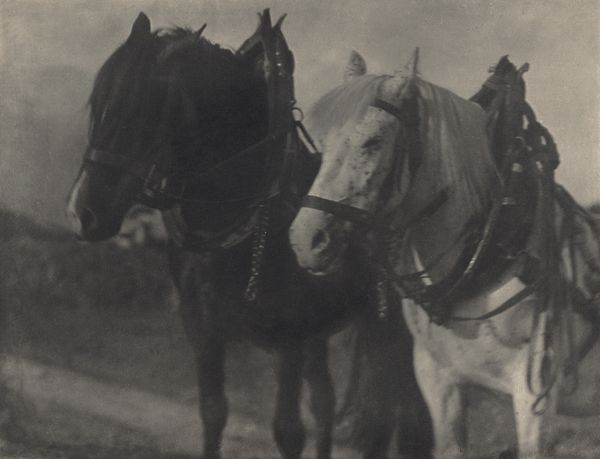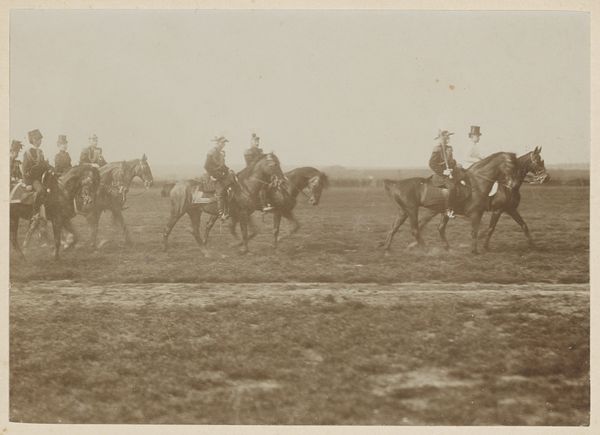
Dimensions: height 80 mm, width 109 mm
Copyright: Rijks Museum: Open Domain
Curator: Right now we're looking at "Militairen te paard in een legerkamp te Fontainebleau," taken in 1896. It's attributed to Delizy, part of the photography collection here at the Rijksmuseum. What leaps out at you first? Editor: Immediately, it’s the light—that sepia wash that time gives everything, softening the edges and lending this feeling of…pastness, of something long gone but somehow still present. There's a sense of order and quiet observation. The contrast between the soft background and the sharpness of the riders strikes me the most. Curator: Absolutely. Think about what horses symbolized, then, particularly within military imagery. They weren't just transportation; they embodied power, status, virility even. These officers become centaur-like figures, blending human intellect with animal strength. Editor: And you see that echoed, of course, in classical statuary and paintings where military or political leaders are so often depicted on horseback to highlight authority. And it isn’t just their authority, but their mastery, their capability to govern not only the country, but their very own, and gigantic, war horse. It reflects the cultural memory of leadership and conquest, wouldn’t you agree? Curator: Without a doubt. It’s also intriguing to note how the artist captures a moment that isn't necessarily heroic. The composition isn't about charging into battle; instead, it’s this quieter scene of military life. Even genre-painting. You're given these intimate vignettes of what those times look like, not for the faint of heart. What secrets are those trees holding I wonder. Editor: Perhaps it's meant to convey preparedness—the quiet before the storm. Or, that even amidst war, everyday routines persist. Those tents pitched behind them suggest this sort of duality: domesticity against this background of potential disruption and upheaval. It adds layers of psychological complexity. Curator: Yes, and there’s also something very impressionistic about it. The way the artist seems less interested in photorealism and more focused on evoking atmosphere, light, a mood... I love how photography allowed artists to play with the seen and unseen in those days. Editor: In a way, that impressionistic quality lets our imagination fill the gaps, and perhaps make the scene resonate deeper within each viewer's emotional experience.
Comments
No comments
Be the first to comment and join the conversation on the ultimate creative platform.
